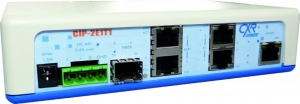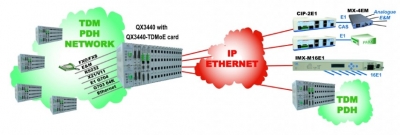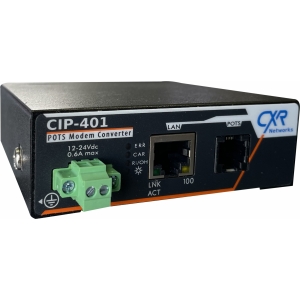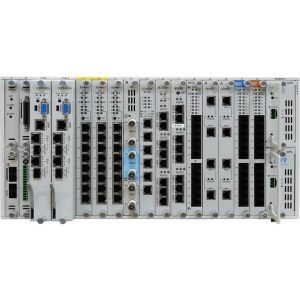CIP-2E1T1
The CIP-2E1T1 carry TDM E1 or T1 or fractional d’E1 fractional E1/T1 of n TS encapsulated via Ethernet or IP pipe. A bundle of one full E1/T1 or n TS is carried in a « Pseudowire Emulation End to End » (PW3E) over a Packet Switched Network (PSN) means IP or Ethernet or MPLS network.
This transport emulate the full E1/T1 service and both end equipments like PBX or PDH muxes get the E links as direct connection like strait cable or E1/T1 over fiber or E1/T1 over DSL connection.
Telco use CIP-2E1T1 to carry E1/T1 to distribute voice and data over Ethernet cloud to the subscribers. With the OCXO option the PseudoWire equipment (PW) is enable to regenerate the synchronization clock in the customer premises.

The CIP-2E1T1 carry the E1/FE1 or T1/FT1 in point to point or point to multi-points. One bundle can be set per full E1 or T1 (G703) or fractional FE1 G704 or FT1. In case of channelized E1/T1, when the group of TS are transported to multi-points, we set a bundle per direction and group of TS. The CIP-2E1T1 is grooming the n64Kbps circuit from several distant sites using CIP-2E1T1 or other PW RFC compliant equipments.
 A CIP-2E1T1 box owns 2 E1/T1 TDM interfaces and can support up to 64 bundles or directions. Each bundle can be routed to 64 different distant sites. Each bundle can use any of CESoPSN, SAToP or AAL1 (TDMoverIP) protocol. Two bundles will be used as protection in addition to the WAN protection.
A CIP-2E1T1 box owns 2 E1/T1 TDM interfaces and can support up to 64 bundles or directions. Each bundle can be routed to 64 different distant sites. Each bundle can use any of CESoPSN, SAToP or AAL1 (TDMoverIP) protocol. Two bundles will be used as protection in addition to the WAN protection.
The CIP-2E1T1 transports in a single bundle an unframed E1/T1, G.704 framed E1/T1, E1-CAS/T1-CAS or E1 PRA ISDN or T1 PRA ISDN. The CIP-2E1T1 owns a CAS fabric, so in case the E1/T1 interface is connected to an E1/T1-CAS and when the TS are transported in different bundles toward different directions the CIP-2E1T1 is creating a CAS signalization per bundle which is associated to the transported voice signal. For example if one of the E1 interface is connected to an E1-CAS of a PBX with 16 FXO voice channels to 4 directions of 4 FXS each, the CIP-2E1T1 will create 4 bundles with 4 TS each and the CAS signalization corresponding to the 4 FXO/FXS transported. The CAS signalization is transported as a data information with the bundle and don’t use a 64Kbps TS. At other end the distant E1 with the CAS managing this 4 voice TS only.
The CIP include a 3 ports Layer2 switch with two 10/100Baset and one 100FX SFP ports. They can be used as LAN+1 WAN or 1 LAN+2 WAN. The switch supports C-VLAN, S-VLAN (Q-in-Q) tagging and the QoS to optimize PW or encapsulated TDM with LAN ports over WAN port with IP-TOS management.
The CIP-2E1T1-OX version owns an OCXO clock with a stability of 9x10-9. If both end devices owns the same feature they are able to carry the synchronization information together with payload. Then the distant device can synchronize a local E1 device.

All CXR Pseudowire RFC range are compatible together. The CIP-2E1, CIP-ALL, theQX3440-TDMoE card of the PDH DACS QX3440 and the modular concentratorsIMX-M16E1T1 or IMX-MSTM4 can exchange bundles together in point to point or point to multipoint.





